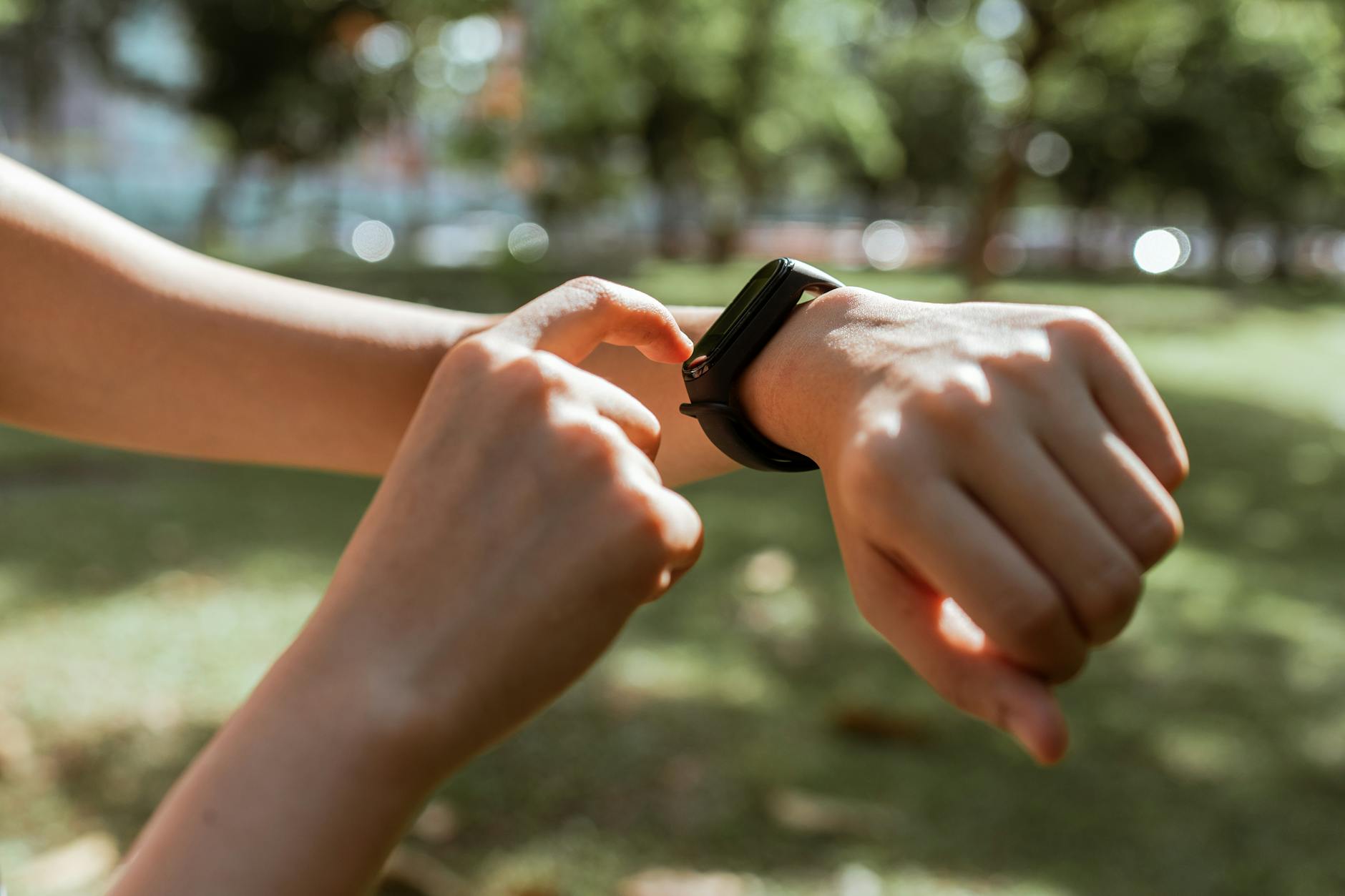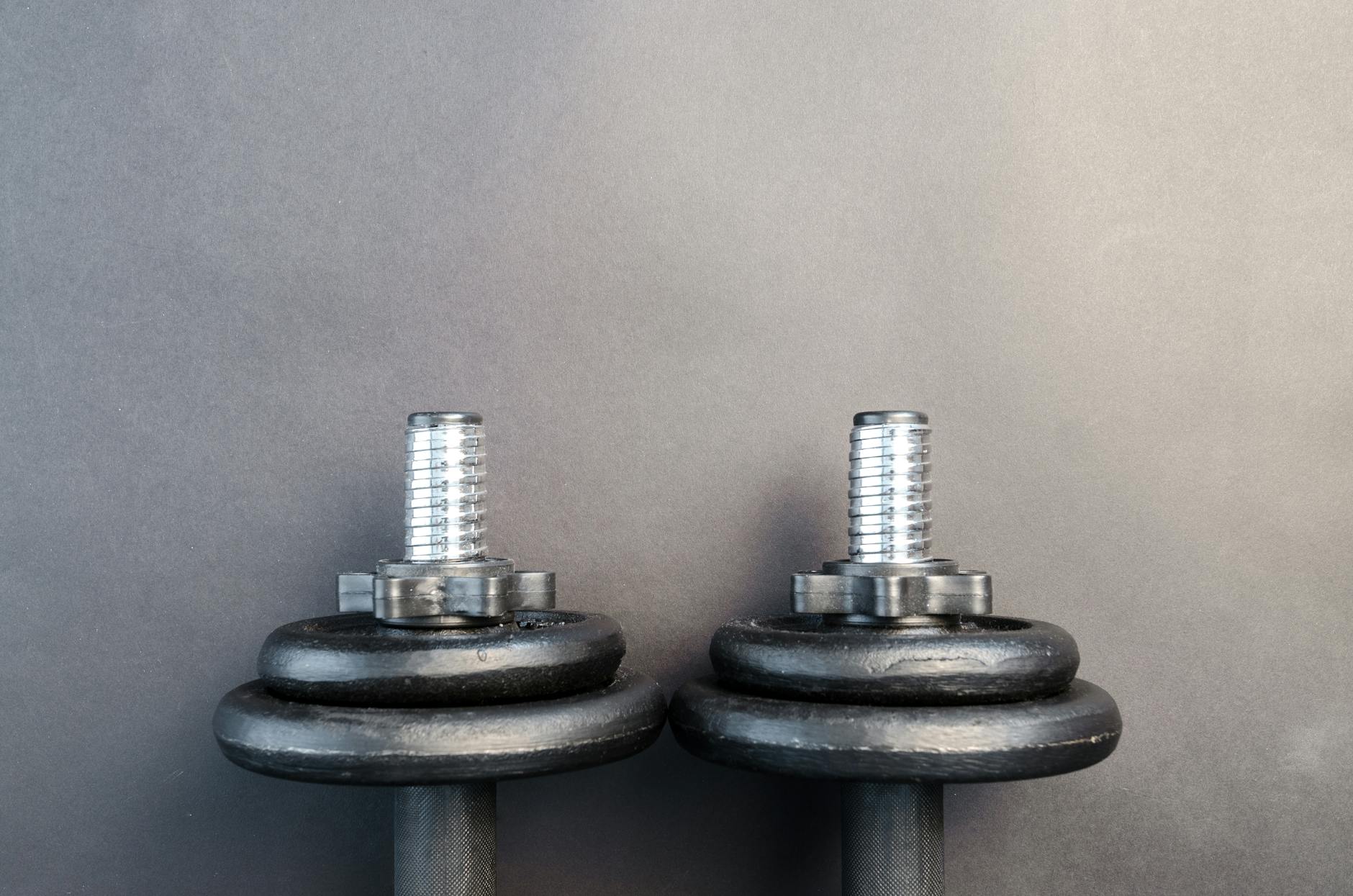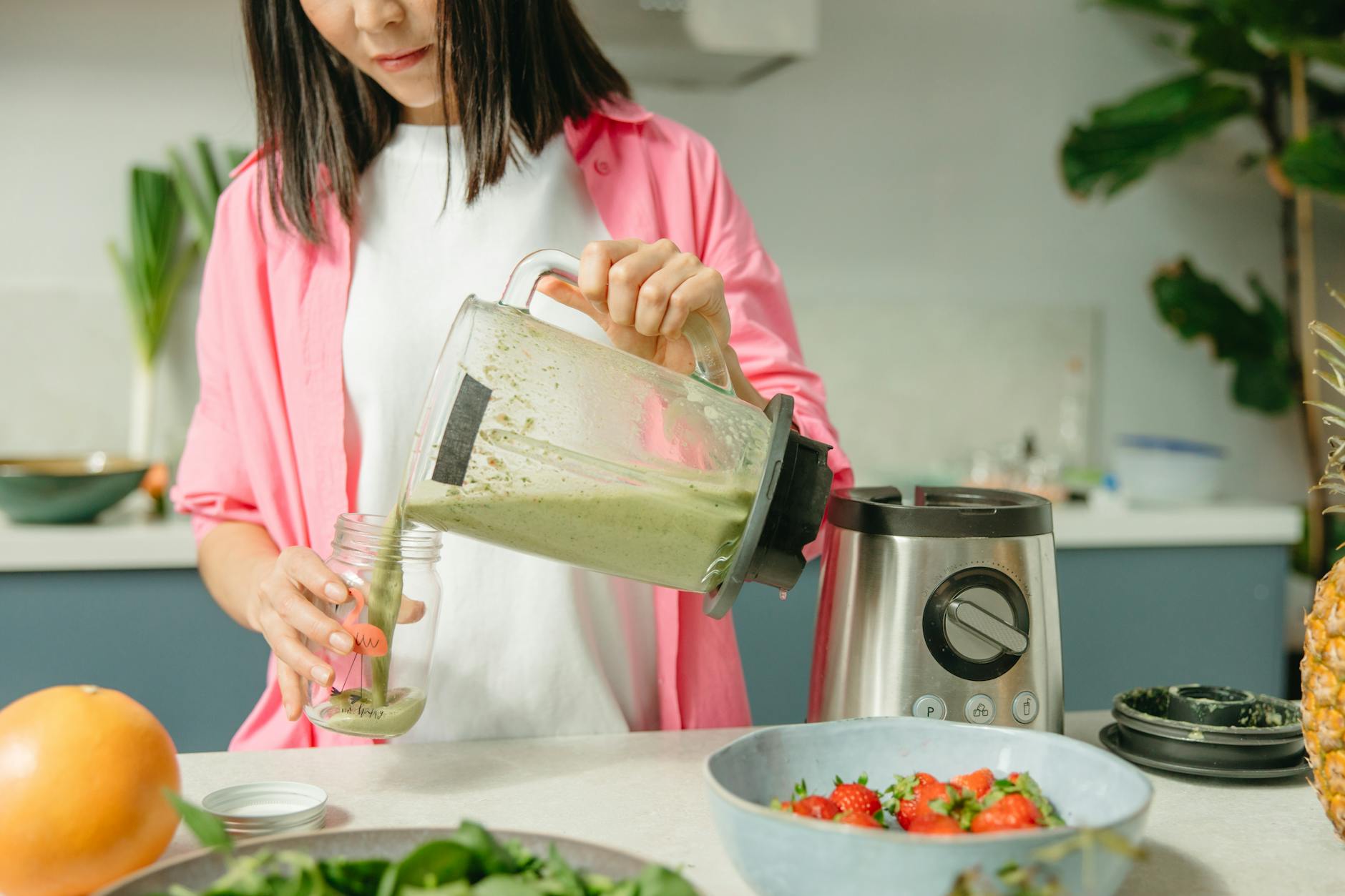It is a question that many people are asking. Are recumbent bikes good for sciatica? The answer might surprise you: yes it is.
Sciatica is determined agony felt along the sciatic nerve. This nerve runs from the lower back, down through the butt cheek and into the lower leg. Torment results when this nerve is packed or harmed. It most usually results from irritation, bone chips brought about by joint pain, or a herniated (“slipped”) plate in the lower spine.
Sciatica causes sharp, consuming agony, or shivering or deadness along the nerve. Much of the time, manifestations are more regrettable around evening time. Also the torment is exacerbated by movement.
Many individuals with sciatica keep away from practice by and large inspired by a paranoid fear of exacerbating the situation. That is normally not the most ideal choice. I compliment your methodology of practicing while at the same time being insightful with regards to which practice you pick.
With respect to which works out, my recommendation is the same presumably as what your grandma may have given: Avoid practices that hurt, and look for practices that help you to have an improved outlook.
You get some information about riding a fixed bicycle. Sciatica torment is frequently more regrettable when sitting on a firm surface in light of the fact that the sciatic nerve goes directly through the butt cheek. At the point when you sit on a bike seat, it can come down on the nerve. Yet, sitting doesn’t generally exacerbate indications. For instance, assuming that your sciatic nerve torment results from an issue higher up close to the spine, you might endure riding a bicycle.
Sciatica can be brought about by various things, including sitting erroneously at your work area or in the vehicle. A recumbent bicycle will help with diminishing strain on the lower back and leg muscles since you’re situated more upstanding when riding it. You’ll likewise observe that they are a lot simpler on your knees than on a conventional bike since you don’t need to twist them very much.
What is Sciatica and What are the Symptoms?
Sciatica is a condition that influences the nerves in your lower back. It can cause you to feel torment, deadness, or shivering down one of your legs and it very well might be hard to walk whenever left untreated.
The most widely recognized side effect is torment that moves from the foundation of your spine up through the two rump and into one or the other leg subsequent to sitting for significant stretches of time. When lying on their side, individuals with sciatica frequently experience strain or agony along the course of their nerve root as they rest since this position puts weight on it.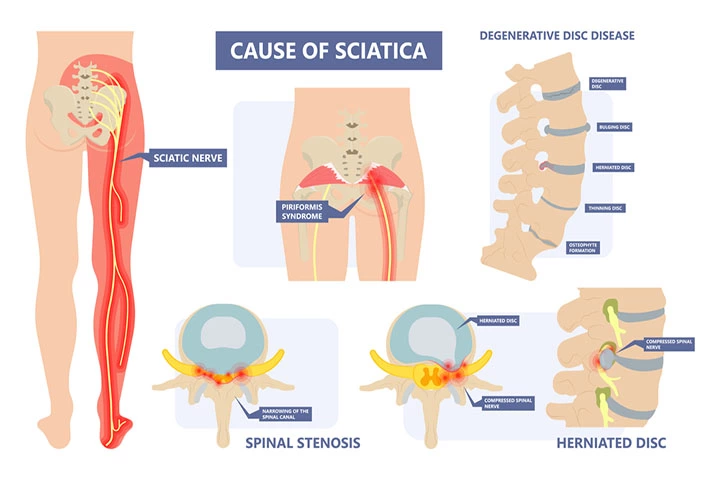
Other symptoms include burning, tightness, or weakness in an arm; pins-and-needles sensations in arms and legs; trouble sleeping due to discomfort when lying flat on one’s back; difficulty turning over in bed; or pain when getting out of bed.
How does a Recumbent Bike Help with Sciatica?
Recumbent bikes are frequently suggested for individuals with sciatica since they can be utilized to practice the muscles around the spine and pelvis without as much uneasiness. They also give a low-sway exercise that reinforces center muscles without putting an excess of strain on joints and connective tissues like hips, knees, lower legs, and feet.
This makes them particularly useful for individuals with joint inflammation in their lower back or the people who need to keep away from hard arrivals from high leaps (line skating). Recumbent bikes will most likely be unable to give you a vigorous exercise as different sorts of gym equipment yet they’re as yet a preferred choice over sitting from morning ’till night.
The seat is further away from your body, so it’s more similar to sitting in a seat than on an upstanding bicycle or seat with surprisingly better structure with less uneasiness. In addition, you’ll as a rule find that recumbents come preloaded with programs customized explicitly towards the individuals who experience the ill effects of back torment.
There are many benefits to utilizing a Recumbent Bike, and they can also assist with sciatica manifestations. The arm that goes through the hip regularly causes lower-back torment when it’s strained so individuals who don’t figure their backs can deal with riding on different sorts of bicycles track down help by plunking down. They’re superior to most exercise balls since they require less equilibrium which is ideal for those with constant back issues.
One more fun reward for utilizing this sort of bicycle is that it’s useful for your stance. Assuming you can bear the cost of the more costly models with a higher seat back and movable handlebars, then, at that point, you will actually want to change it so when situated on the machine your spine is in arrangement without bowing forward.
Furthermore not exclusively does an activity supine bicycle assist with forestalling wounds like sciatica by easing tension on your lower back just as fortifying muscles all around your body; rather than slouching over on a standard bike seat which puts pressure straightforwardly onto the tailbone you’ll keep up with better structure with less distress in light of the fact that the seat is further away and it’s more similar to sitting in a seat.
Advantages of Using a Recumbent Bike for Sciatica Pain Relief
- It doesn’t need extraordinary equilibrium to utilize.
- Calmer and less diverting than different bikes.
- It diminishes the tension on your spine and pelvic area.
- Plunking down eases the heat off the back, hips, knees, and lower legs thus decreasing sciatica torment.
- Low back help which is ideal for those with constant lower back issues.
- You can practice in a situated position where you won’t have balance issues like different bicycles, this is extraordinary on the grounds that it helps individuals who track down standing up troublesome or difficult because of their sciatica torment.
- They give adjustment and solace when riding the bicycle that permits one to work out longer without getting worn out as quickly as on an upstanding bike. The recumbent bikes have been designed so you incline forward while plunking down rather than inclining in reverse like on an upstanding bicycle seat which makes it more straightforward to ride bikes assuming you want lumbar spine help from your sciatica side effects.
- Expands center strength by holding your abs tight while sitting on recumbent bikes. This is significant for those with persistent back issues or who need to keep such issues from happening.
- Recumbent bikes are commonly pre-stacked with programs custom fitted to the individuals who experience the ill effects of back torment, which can make them simpler to use for sciatica victims. Anyway not all recumbents come stacked with these sorts of highlights.
Disadvantages of Using a Recumbent Bike for Sciatica Pain Relief
- Inclining forward can aggravate the lower spine assuming you sit excessively far out of the seat’s normal lean back position
- They’re not work for focused energy exercises (however some have opposition levels up to 300 watts)
- In addition, it’s hard getting locally available to them without assistance since they’re so low to the ground.
Tips to Use a Recumbent Bike Correctly
Change the seat and handlebars so they are at an agreeable stature. You ought not slump while sitting or inclining toward them.
If you have lower back issues brought about by tension from clutching handles, then, at that point, have a go at utilizing just one hand for better arm/hand situating (one hand could be resting alongside the casing). Assuming this is still excessively awkward for your lower back, utilize cushioned bicycle gloves that can be bought independently or add cushioning around the bar hold region with towels or defensive cushions sold at bike shops.
Sit once more into the situation and be certain that you’re not very near its front, so your knees are at a 90-degree point from your hips.
Changing pedals accurately will assist with tension on your feet, also. Change the two sets until they’ve arrived at an equivalent tallness for simpler accelerating movement with next to no aggravation or uneasiness while riding. You might require more than one pedal wrench on the off chance that changing them is extreme because of their snugness prior to putting them on appropriately utilizing two hands rather than only one hand.
In the event that you end up exceeding when attempting to pedal rapidly, place a few towels under each foot for some additional padding.
You may also have to change the seat’s height so you’re not very short or tall for your bike.
Why do People Love Recumbent Bike for Sciatica?
Recumbent bikes appear to be an odd decision when managing back torment issues brought about by sciatica as they require inclining forward consistently. However, many individuals who experience the ill effects of persistent back issues have observed that sitting on a supine bicycle can be useful because of the low-sway nature of the machine.
The customary upstanding plan can put a ton of weight on the lower back, making torment discharge up in regions that are now touchy; notwithstanding, when you sit supine, your chest area is leaning against a strong backrest with less strain set upon it. The most effective way to keep away from sciatica flares while utilizing this gym equipment is by changing the seat tallness and handlebars so they’re agreeable for you to simply try not to slump.
Recumbent bikes have been demonstrated as a compelling therapy for constant back issues brought about by sciatica in light of the fact that their low effect configuration lessens tension on those spaces without expanding nervousness or trouble breathing They give delicate exercise that doesn’t build levels of carbon dioxide and power, which is incredible for individuals with hypertension.
Assuming you have a past filled with sciatica or experience the ill effects of constant back issues brought about by it like agony in the hips, knees, or lower legs, think about utilizing recumbent bikes to facilitate your manifestations.
The most effective way to stay away from these eruptions while practicing on this machine however is by changing seat tallness and handlebars so they’re agreeable and simply don’t slump. Assuming you are thinking about getting one yet aren’t sure in case it will be appropriate for you depending on the spot requirements like space in the home or accessible supports then, at that point, consider buying an activity cycle that has flexible pedals.
Normal Mistakes to Avoid
Going too quick or hard on the activity machine. The way to get great sciatica alleviation is to keep your body in arrangement and stay away from superfluous pressure that can disturb, torment side effects and exacerbate the situation. Dial back, utilize lighter tension on pedals, don’t push so severely with handles until you become acclimated to it, and so on. It’s better not to exaggerate anything from the get go.
Neglecting to enjoy reprieves occasionally. Get off of your Recumbent Bike like clockwork on the off chance that conceivably loosen up those muscles while they’re loose prior to returning into position once more.
Try not to try too hard. In case you’re encountering sciatica torment, keep away from any activity that may bother your indications. This incorporates downhill running, squats and certain yoga presents.
Recumbent bikes ought to be a piece of your treatment plan for sciatica torment in the event that you are hoping to fortify the muscles in your lower back or further develop flow.”
Ensure that you have an activity routine with practices that work for quite a long time bunches all at once so as not to exhaust a specific region to an extreme. This can assist with lightening a portion of your indications while chipping away at those different regions like reinforcing your center and pelvic floor muscles.
Buying Guidelines for Recumbent Bike
Checking the following features and testing bikes at a gym or store first will increase the chances of finding the right bike for an exercise program:
- Enough space between the seat and handles to easily get on and off
- A heavy front wheel, which makes for a more stable bike
- A heart-rate monitor that will allow users to measure whether they are at the right level of exertion. More expensive machines have cordless chest straps, which are more accurate than a hand-grip monitor.
- An easily adjustable seat. The seat should be at hip height to ride comfortably. On a recumbent model, the back should feel fully supported. Pedals should be wide with a strap to keep feet in place.
- A covered wheel and chain will prevent fingers from getting pinched and minimize the amount of dust that could settle on and clog the mechanism, and also buffer the noise from the machine
- A readable monitor within easy reach to adjust resistance and see displays such as distance, speed, time, calories burned and resistance level.
Conclusion
The recumbent bike isn’t a fix just for sciatica, however it tends to be useful when utilized related to different medicines. Assuming you’ve been experiencing sciatica and need some alleviation without medications or medical procedure.
The recumbent bike is an astounding method for practicing and might be useful for sciatica. The best thing about it is that you can pedal in various positions which implies the strain on your back will differ. This machine likewise modestly affects the joints just as muscles due to its plan. It’s important to consult with your doctor before starting any new fitness routine but this might just do the trick.
Frequently Asked Questions
1. Does recumbent bike help sciatica?
Aerobic exercise, which is what recumbent biking is classified as, is beneficial for those suffering from sciatica, as it helps to strengthen and condition your trunk and spinal muscles. Exercise also helps to decrease the risk of sciatica recurrences over time.
2. Is it OK to ride a bike with sciatica?
When you sit on a bicycle seat, it can put pressure on the nerves. But sitting does not always make symptoms worse. For example, if your sciatic nerve pain results from a problem higher up near the spine, you may tolerate riding a bike.
3. Does a recumbent bike help back pain?
Reclining bicycles, also called recumbent bikes, can also help those with lower back pain who feel better in a reclining position. Although biking can be a good exercise option for those with existing back pain, it can also cause back pain if not done properly. Poor posture on the bicycle can strain the back.
4. What makes sciatica flare up?
Sciatica nerve pain can flare up due to carrying extra weight and bad posture. Sciatica is a medical condition where an individual feels pain radiating from the sciatic nerve. This nerve begins in the lower back and runs down to the legs.
5. Why does sciatica hurt more at night?
Some people with sciatica notice their symptoms get worse when they’re in bed. Lying down can increase pressure on your irritated nerve, especially if you sleep on a soft mattress that causes you to bend your spine while sleeping.
6. Is bed rest good for sciatica?
For patients with sciatica, there is little or no difference between advice to rest in bed and advice to stay active. There is little or no difference in the effect of bed rest compared to exercises or physiotherapy, or seven days of bed rest compared with two to three.
7. Is sciatica worse in the morning?
Sciatica is often worse in the morning because of the way you sleep. Laying in incorrect and awkward positions can irritate nerves because you compress the exit spaces in the spinal column. This limits the space nerve roots have to travel and can worsen your condition.
8. Is sitting bad for sciatica?
Sitting too much can also trigger or worsen sciatica pain. Sitting is another activity that puts a lot of pressure on your glute muscles, lower back, and sciatic nerve. Moving around gives your sciatic nerve a break, a chance to stretch and allow blood to flow to the area.
9. What side is your sciatic nerve on?
The five nerve roots come together to form a right and left sciatic nerve. On each side of your body, one sciatic nerve runs through your hips, buttocks and down a leg, ending just below the knee. The sciatic nerve then branches into other nerves, which continue down your leg and into your foot and toes.
10. How long will sciatica take to heal?
For the majority of patients, acute sciatica pain resolves within 1-2 weeks. In some cases, behavioral modification or at-home remedies may be adequate for relieving sciatica pain. However, certain patients may develop chronic sciatica pain which may wax and wane but remains present over many years.
Discover the ultimate sweat sessions that will take your fitness game to the next level in just 5 powerful workouts.
Table of Contents
Living a healthy lifestyle is all about finding a balance between effective workouts, nutritious meals, and a well-thought-out gym plan. Whether you are a beginner looking to kickstart your fitness journey or a seasoned athlete wanting to take your workouts to the next level, incorporating a variety of exercises, maintaining a proper diet, and having a solid gym routine in place are essential components for success.
Setting Realistic Fitness Goals
Before embarking on your fitness journey, it is crucial to set realistic and achievable goals that will keep you motivated and on track. Remember to create SMART goals – Specific, Measurable, Achievable, Relevant, and Time-bound. By having clear objectives in mind, you can tailor your workouts, nutrition plan, and gym routine to best suit your goals.
Designing a Workout Routine
When it comes to workouts, variety is key. Incorporate a mix of cardiovascular exercises like running or cycling, strength training with weights or resistance bands, and flexibility exercises such as yoga or stretching. This diverse approach not only keeps things interesting but also helps target different muscle groups and improve overall fitness levels.
Understanding Nutrition Basics
Proper nutrition plays a vital role in supporting your fitness goals. Focus on consuming a balanced diet that includes a mix of macronutrients (protein, carbohydrates, and fats) and micronutrients (vitamins and minerals). Be mindful of portion sizes and opt for whole, unprocessed foods whenever possible to fuel your workouts and promote overall health.

Image courtesy of www.reddit.com via Google Images
Planning Meals and Snacks
Meal prepping and creating a grocery list can help you stay on track with your nutrition goals. Plan ahead and batch cook meals for the week to ensure you have healthy options readily available. Incorporate nutritious snacks like nuts, fruit, or Greek yogurt to keep you energized throughout the day and prevent overeating.
Hydration and Its Role in Fitness
Staying hydrated is essential for optimal performance during workouts. Aim to drink an adequate amount of water before, during, and after exercise to prevent dehydration and support muscle function. Consider tracking your water intake and choose beverages that hydrate without added sugars or artificial ingredients.

Image courtesy of hoopsking.com via Google Images
Creating a Gym Plan
When it comes to choosing a gym or workout space, select a location that aligns with your fitness goals and preferences. Whether you prefer a traditional gym setting or outdoor workouts, finding a place that motivates you to exercise regularly is key. Develop a weekly gym schedule that includes a mix of cardio, strength training, and rest days to maximize results.
Incorporating Rest and Recovery
Rest and recovery are just as important as exercise in achieving your fitness goals. Allow for adequate rest days in between workouts to prevent burnout and reduce the risk of injury. Incorporate activities like stretching, foam rolling, or yoga into your routine to aid in muscle recovery and promote flexibility.

Image courtesy of www.linkedin.com via Google Images
Monitoring Progress
Tracking your fitness goals and monitoring progress is crucial for staying motivated and making adjustments as needed. Use fitness apps or journals to log your workouts, nutrition intake, and measurements to see how far you have come. Celebrate small victories along the way and don’t be afraid to modify your plan to keep challenging yourself.
Conclusion
By incorporating a balanced approach to health and wellness through workouts, nutrition, and a solid gym plan, you can take your fitness game to the next level. Remember to set realistic goals, stay consistent with your workouts and meals, and prioritize rest and recovery. With dedication and perseverance, you can achieve your fitness goals and enjoy the benefits of a healthier, stronger body.
Discover the secret to maximizing your workout results with this ultimate routine that will leave you feeling stronger and healthier.
Table of Contents
Are you looking to amp up your fitness routine and see real results? Look no further than a comprehensive workout plan that focuses on both exercise and nutrition. By combining the two, you can maximize your efforts in the gym and achieve your fitness goals faster. In this guide, we’ll walk you through creating a successful workout plan with a special emphasis on nutrition.
Assess Your Goals
Before diving into any workout or nutrition plan, it’s crucial to assess your fitness goals. Are you looking to lose weight, build muscle, or simply improve your overall health? By defining your objectives, you can tailor your plan to meet your specific needs and stay motivated along the way.
Evaluate Your Current Fitness Level
Take a moment to evaluate where you currently stand in terms of fitness. Consider your strengths and weaknesses, as well as any physical limitations you may have. Understanding your starting point will help you gauge progress and set realistic expectations for the journey ahead.
Research Nutritional Needs
Proper nutrition is key to fueling your workouts and seeing results. Depending on your fitness goals, you may need to adjust your eating habits to support your body’s needs. Whether it’s increasing protein intake for muscle gain or managing calorie intake for weight loss, researching your nutritional needs is an essential step in creating a successful workout plan.

Image courtesy of www.dailyinfographic.com via Google Images
Create a Balanced Meal Plan
A balanced meal plan is the foundation of any successful fitness journey. Focus on incorporating a variety of nutrient-dense foods that provide the energy and nutrients your body needs to perform at its best. Aim for a mix of lean proteins, whole grains, fruits, vegetables, and healthy fats to ensure you’re getting all the essentials.
Design Your Workout Plan
When designing your workout plan, consider the types of exercises that align with your fitness goals. Whether you’re focusing on cardio, strength training, or a combination of both, make sure your plan is well-rounded and targets all areas of fitness. Mix up your routine to keep things interesting and challenge your body in new ways.
:max_bytes(150000):strip_icc()/autumn-calabrese-muscle-building-workout-plan-2-04cf1df91a124633868a1958a0c03aa9.jpg)
Image courtesy of www.shape.com via Google Images
Schedule Your Workouts
Consistency is key when it comes to seeing results in the gym. Create a workout schedule that fits into your daily routine and allows you to stay on track with your fitness goals. Whether you prefer morning workouts, evening sessions, or lunchtime sweat sessions, find a schedule that works for you and stick to it.
Measure Progress
Tracking your progress is essential for staying motivated and seeing how far you’ve come. Take measurements, snap photos, or keep a workout journal to document your journey and celebrate your victories along the way. Seeing tangible results can help you stay committed to your fitness plan.

Image courtesy of www.pinterest.com via Google Images
Listen to Your Body
It’s important to listen to your body and adjust your workout plan as needed. Pay attention to how your body responds to exercise, and don’t be afraid to make changes if something isn’t working. Rest when you need to, modify exercises as necessary, and always prioritize your overall health and well-being.
Seek Professional Guidance
If you’re unsure about creating a workout plan or navigating the world of nutrition, consider seeking professional guidance. A personal trainer or nutritionist can provide expert advice tailored to your individual needs and ensure you’re on the right path to reaching your fitness goals. Don’t be afraid to ask for help when needed.
By following these tips and creating a workout plan that focuses on both exercise and nutrition, you can take your fitness journey to the next level and achieve maximum results. Remember to stay committed, stay consistent, and most importantly, listen to your body along the way. With dedication and perseverance, you can reach your fitness goals and become the best version of yourself.
When you’re looking for the best shoe rope climbs, consider shoes that are equipped with rope-climbing technology. Typical with rope climbing is an outsole which is grippy and equipped with aggressive lugs on the lateral and medial areas.
This construction helps in biting on the rope when climbing up or down the rope. Such shoes also come with rubber-like overlays on the sides of the upper unit to guard against excessive abrasion.
Below are some of the most recommended rope climbing shoes.
Best 10 Shoes for Rope Climbs
1. Inov-8 Men’s F-Lite 235 V2 Cross-Trainer Shoe
 Inov-8 F-Lite is a crossfit shoe that will take into account all of your rope climbing shoes. This cross fit shoe is characterized by a 100% material upper. To guarantee that the shoes are breathable and breathable lattice was likewise included. For solace, a quality sock liner that was expertly punctured was featured.Best Shoes For Rope Climbing
Inov-8 F-Lite is a crossfit shoe that will take into account all of your rope climbing shoes. This cross fit shoe is characterized by a 100% material upper. To guarantee that the shoes are breathable and breathable lattice was likewise included. For solace, a quality sock liner that was expertly punctured was featured.Best Shoes For Rope Climbing
The impact point measures 10mm while the forefoot measures 6mm consequently guaranteeing that your foot is 100% stable .An expert ribbon carport was incorporated. The innersole of these shoes is somewhat removable and it permits you to be in a place of cleaning the shoes effectively after a rope climbing trip. You can likewise add a more solid or thick innersole.
Not at all like other rope climbing cross foot shoes that accompany an elastic bottom, this Inov-8 F-Lite has an engineered underside. Your foot is additionally kept dry and liberated from any water by the engineered underside. Quality foothold and rope hold are likewise presented by the engineered underside. The removable insole guarantees that subsequent to cleaning these shoes will dry all the more without any problem.
Key Features
- Synthetic and Textile
- Imported
- Rubber sole
- Shaft measures approximately low-top from arch
- For versatile training.
- Supreme stability: The same high density Power heel technology, zero drop proprioception, and new heel lock construction delivers maximum stability when lifting weights.
- An ultra secure fit: ADAPTERFIT Met-cradle adapts to the natural movement and swells with the foot when in motion during fast, hard lateral and medial movement. New welded overlay construction reduces weight while maintaining ultimate fit and flexibility.
- Natural flexibility: Next generation Meta-flex technology allows optimal multi-directional flexibility and the metcradle lacing system holds your foot secure in the shoe ensuring the shoe moves naturally with the foot.
- Unrivaled grip: The unbeatable grip expected in all inov-8 models with 360 degree Rope-tec extended onto the shoe’s upper for traction and durability on rope climbs.
- Pros
- Removable insole
- Strong sole.
- Plush cushioning
- Synthetic sole
Cons
- Weighs 1 pound
- Quality sole material is needed
2. Reebok Women’s Tr Speed Her Training Shoes
 Designed as a women’s only shoe, the Speed Her TR conveys incredible execution in rope-climbing, weightlifting among others.
Designed as a women’s only shoe, the Speed Her TR conveys incredible execution in rope-climbing, weightlifting among others.
It accompanies a position of safety underneath the stage which saves your feet close to the surface for upgraded strength during weightlifting. Running all through the padded sole is the Imeva froth padding which is liable for underneath solace and effect security. Besides, your solace is uplifted by the removable insole.
The lower part of the shoe is wrapped in a tri-thickness elastic compound which conveys increased footing and scraped spot opposition. It’s planned with changed kinds of grasping examples to offer precise footing for forefoot, midfoot impact point.
Key Features
- Man Made
- Imported
- Man Made sole
- Shaft measures approximately low-top” from arch
- DURABLE AND LIGHTWEIGHT MATERIAL: These sneakers feature performance woven jacquard upper for durability and supportive comfort; Forefoot flex grooves for flexibility
- EFFICIENT FOOT SUPPORT: These stylish trainers with 3D fuse frame construction for seamless lightweight support provides ultimate performance comfort which lasts many strolls and jogs
- COMFORTABLE AND STURDY DESIGN: This footwear comes with unique outsole rubber pattern for ultimate traction and a firm grip on uneven surfaces; Low-cut design for an increased ankles mobility so you keep moving all day long
- HIGH-PERFORMANCE RUNNING SHOES: Ideal for walking, urban running and training
Pros
- Reliable rope grip
- Lightweight
- Durable construction
- Excellent surface traction
- Stable underfoot platform for weightlifting
Cons
- Not for high-impact training
3. Reebok Women’s CROSSFIT Nano 8.0 Flexweave Cross Trainer
 The refreshed rendition of Nano 8 currently uses Flexweave innovation which conveys elevated adaptability, backing and strength. It was planned with two layers of textures, with the internal later framing a cleatie which offers a sock-like fit.
The refreshed rendition of Nano 8 currently uses Flexweave innovation which conveys elevated adaptability, backing and strength. It was planned with two layers of textures, with the internal later framing a cleatie which offers a sock-like fit.
Upheld by the deliberately positioned overlays, the external layer conveys sufficient help while staying strong. Furthermore there’s a durable TPU heel counter which diminishes heel developments particularly during side-to-side developments.
The underneath stage is created to offer satisfactory responsiveness for plyometrics and stay firm enough during weightlifting. Upheld by the Ortholite footbed, the thick padded sole additionally gives satisfactory assurance from extreme effect during hopping exercises.
Key Features
- 100% Synthetic
- Imported
- Synthetic sole
- Shaft measures approximately low-top from arch
- DURABLE AND LIGHTWEIGHT MATERIAL: These flex weave woven sneakers provide resilient stretch and support; Re-engineered Flexweave technology provides stability and flexibility
- EFFICIENT FOOT SUPPORT: These stylish trainers with new heel bootie construction with added cushioning provides ultimate performance comfort
- COMFORTABLE AND STURDY DESIGN: This footwear features Toe Tection that provides durability for high-intensity workouts; Low-cut design for an increased ankles mobility so you keep moving all day long
- HIGH-PERFORMANCE SPORT SHOES: Ideal for workouts and weightlifting
Pros
- Versatile trainer
- Ideal for rope climbs
- Breathable upper
- Removable insert
- Underfoot comfort and support
- Durable crossfit sneaker
Cons
- Might experience heel slippage
4. Inov-8 Men’s F-lite 235 V3
 The increased hold, there’s dependable footing on the exercise center floor. Since the elastic likewise wraps the two sides to the midfoot region, the shoe additionally conveys great grasp on ropes. Also, it monitors the upper unit from dangers.
The increased hold, there’s dependable footing on the exercise center floor. Since the elastic likewise wraps the two sides to the midfoot region, the shoe additionally conveys great grasp on ropes. Also, it monitors the upper unit from dangers.
Additionally utilized on the outsole is the DFB and Meta-Flex grooves, the two of which are liable for smooth and easy changes.
What separates F-Lite 235 v3 shoes from regular broadly educating shoes is its responsive yet stable padded sole. It’s assembled utilizing Powerflow+ froth compound which conveys a firm and springy underneath sensation. This makes it ideal for weightlifting and dangerous exercises like box hops.
The upper texture and overlays are intended to enclose your feet by a steady and non-limiting way. The cross section development additionally guarantees that your feet don’t become wet or exorbitantly hot. Additionally there’s a delicate inside to limit teasing.
Key Features
- Synthetic-and-mesh
- Made in USA or Imported
Pros
- Adequate flexibility
- Ample breathability
- Versatile
- Durable sneaker
- Firm and well-cushioned midsole
Cons
- Not good for heavy lifts
5. Inov-8 Mens F-Lite 290 Super Versatile Cross Training Shoe
 The most praiseworthy thing with the F-Lite 290 is its flexibility in broadly educating. You can utilize it in weight preparing, high-sway cardio, plyometrics and the majority of exercise center exercises. Assuming that you’re searching for the best shoes for rope climbs, then, at that point, this is a nice choice.
The most praiseworthy thing with the F-Lite 290 is its flexibility in broadly educating. You can utilize it in weight preparing, high-sway cardio, plyometrics and the majority of exercise center exercises. Assuming that you’re searching for the best shoes for rope climbs, then, at that point, this is a nice choice.
The name ‘Rope-Tec’ on the sidelong side of the sole unit shows that the tennis shoe can be utilized in rope climbing exercises. Both the average and sidelong sides are intended to chomp on the grappling rope with the goal that you don’t slide without any problem. This development fills in as a protection from mileage.
The outsole additionally displays brilliant foothold on normal surfaces whether dry or wet. Also used on the outsole is the DFB and Meta-Flex groove advancements, the two of which are liable for unhindered foot biomechanics.
Key Features
- Synthetic-and-mesh
- EXTRA COMFORT – Midsole technology minimises shock impact and delivers high levels of underfoot cushioning whilst a memory foam inner lining around the heel hugs the foot for added comfort whilst increasing foot lock down.
- FLEXIBLE DESIGN – The outsole technology in the sole of the shoe ensures the foot has the flexibility and freedom to move naturally for the most powerful movements.
- ADDED SUPPORT – The external heel cage paired with the power heel technology provides additional stability and density in the heel, making the shoe perfect for powerful lifting movements.
- MULTI PROTECTION – The technology on the shoes upper delivers traction and durability on rope climbs, an enhanced toe bumper and specifically designed heel slider provides protection whilst decreasing wall drag on handstand push ups.
- SIZE NOTE – The shoes come up a 4 on our fit scale (1 narrow – 5 wide).
Pros
- Excellent versatility
- Overall flexibility
- Durable build
- Breathable construction
- Firm and responsive midsole
- Secure surface grip and rope bite
Cons
- Weighs
- Slightly expensive
6. Nike Men’s Gymnastics Shoes
 Its elastic side boards, Metcon 5 conveys magnificent grasp during rope climbs. The boards likewise stretch out to cover a huge piece of the midfoot region to watch the lattice texture from mileage. The padded sole comes as a position of safety double thickness compound which ensures extraordinary steadiness during weightlifting. Planned as a drop-in stage, the padded sole permits the addition of wedge-like supplements to change the stature of the heel region. This permits unhindered lower leg developments during squats.
Its elastic side boards, Metcon 5 conveys magnificent grasp during rope climbs. The boards likewise stretch out to cover a huge piece of the midfoot region to watch the lattice texture from mileage. The padded sole comes as a position of safety double thickness compound which ensures extraordinary steadiness during weightlifting. Planned as a drop-in stage, the padded sole permits the addition of wedge-like supplements to change the stature of the heel region. This permits unhindered lower leg developments during squats.
With the wide and level outsole, the tennis shoe guarantees that your feet are safely grounded to keep away from wounds during truly difficult work. Two elastic mixtures are used on the outsole to give you secure grasp and proposition scraped spot obstruction. The outsole additionally wraps the toe-box to give an effective guard. This guards your toes during box bounces and burpees.
Key Features
- STRATEGIC STABILITY: A low, flat and wide heel now features a removable Hyper Lift insert that adds offset to help improve stability for squats, wall balls and thrusters.
- ZONED DURABILITY: Textured print on the top of the shoe adds lightweight durability where it’s needed.
- ENHANCED GRIP: Directional traction on the outsole wraps up the side of the shoe for grip when climbing a rope and speed when sliding down
Pros
- Firm cushioning for weightlifting
- Comes with rope grip technology
- Overall durability
- Durable and breathable upper
Cons
- Might require break-in
7. Inov-8 Rope-Tec F-Lite 260 Knit Trainer
 This sneaker ticks all boxes in terms of its cross-functional performance, comfort, style and durability. In the event that you’re searching for the best shoes for rope climbs, then, at that point, you’re all set with F-Lite 260 Knit.
This sneaker ticks all boxes in terms of its cross-functional performance, comfort, style and durability. In the event that you’re searching for the best shoes for rope climbs, then, at that point, you’re all set with F-Lite 260 Knit.
Rope gnawing is made conceivable by the Rope-Tec innovation which is included on the parallel and average midfoot. Reaching out from the outsole to the upper unit through the padded sole, Rope-Tec innovation conveys excellent hold on the rope. Besides it offers protection from scraped spots and tearing.
The tennis shoe utilizes powerflow innovation for the padded sole to give increased effect versatility. Upheld by the power insole and DFB knife, the padded sole conveys outstanding drive for touchy exercises, for example, plyometrics.
The underside of the tennis shoe utilizes a tacky elastic to offer multi-directional hold on the exercise center floor and outside preparing surfaces. The stage likewise utilizes Meta-Flex furrows to advance unlimited foot biomechanics.
Key Features
- Rope biting is made possible by the Rope-Tec technology which is featured on the lateral and medial midfoot.
- It offers resistance to abrasion and tearing.
- The sneaker uses powerflow technology for the midsole to provide heightened impact resilience.
- Backed by the power insole and DFB shank, the midsole delivers exceptional propulsion for explosive workouts such as plyometrics.
- The underside of the sneaker employs a sticky rubber to offer multi-directional grip on the gym floor and outdoor training surfaces.
- The platform also makes use of Meta-Flex grooves to promote unrestricted foot biomechanics.
- As the name depicts, the sneaker comes with a knitted fabric which allows ample foot movements during burpees.
- Presence TPU overlays on the midfoot and heel results in heightened stability during lateral movements.
- The toe area comes with a synthetic overlay which works with the rubber toe bumper to guard your toes during box jumps.
Pros
- Overall flexibility
- Excellent traction
- Good style
- Durable sneaker
- Adequate responsiveness for plyometrics
- Equipped with rope-climbing technology
Cons
- Pricey
8. Salomon Men’s Quest 4d 3 GTX Backpacking
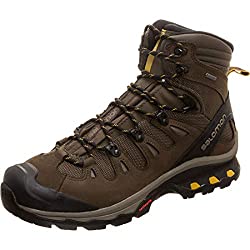 Rope climbing is one of the incredible exercise schedules to remember for your exercise programs as it is all around positioned grasp and lower arm exercises. Salomon Quest boots were highlighted as they take after the boots utilized by a naval force seal during their exceptional rope climbing preparation.
Rope climbing is one of the incredible exercise schedules to remember for your exercise programs as it is all around positioned grasp and lower arm exercises. Salomon Quest boots were highlighted as they take after the boots utilized by a naval force seal during their exceptional rope climbing preparation.
The upper of this boot was formed from a quality calfskin material which guarantees that even in the wake of wrapping a rope round these shoes it will in any case keep up with its exhibition and appearance. A quality elastic sole was used to come up the outsole s as to offer astonishing footing and non-slip rope hold. In case this digger acts up during rope climbing you can undoubtedly rerun it to the maker as it is secured by a 2 entire year restricted guarantee.
For adaptability, this climbing shoe bottom was formed from 100% elastic material henceforth the best shoe brand for climbing a rope.to keep your foot dry or very much shielded from startling precipitation or snow 100% Synthetic material was additionally utilized. Both the collar and the tongue of this boot were marginally cushioned to permit a delicate communication between the boot and your foot.
Key Features
- 100% Synthetic
- Imported
- Rubber sole
- Shaft measures approximately 6.5″ from arch
- WATERPROOF BACKPACKING SHOES: Designed for maximum traction on mixed terrain, the Quest 4D 3 hiking boot features our 4D Advanced Chassis to help guide the foot & reduce fatigue, even on the roughest terrain.
- ANY PATH YOUR WAY: Light & cushioned with running shoe adapted technology, yet supportive enough for backpacking, the Quest 4D waterproof hiking boot helps you get to the next campsite with happier feet.
- ADVENTURE AWAITS: Whether you love a local day hike or hitting the trails for a multi-day adventure, Salomon makes innovative hiking & backpacking shoes & boots for men & women to help you go the distance.
- TIME TO PLAY: Whether you are into trail running, hiking, backpacking, or mountaineering, Salomon has shoes & gear for kids, men & women to help you conquer a new distance, personal record, or event!
- SINCE 1947 Salomon has used our passion for outdoor sports & innovation to create progressive gear. Our road & trail running shoes, hiking sneakers, boots, & water shoes help make any path your own.
Pros
- 100% Synthetic
- Slip-resistant
- Durable
- The limited warranty is 2 year
Cons
- Weighs
- Slightly expensive
9. SCARPA Men’s Vapor V Rock Climbing Shoes for Sport Climbing and Bouldering
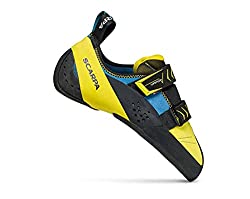 Scarpa Vapor V Climbing Shoe was viewed as a rope climbing shoe that is plan based. Regardless of being named as the spending plan based item your foot will stay to be 100% dry as the maker utilized manufactured unrefined substance. The elastic sole guarantees that the shoes have an expanded life expectancy.
Scarpa Vapor V Climbing Shoe was viewed as a rope climbing shoe that is plan based. Regardless of being named as the spending plan based item your foot will stay to be 100% dry as the maker utilized manufactured unrefined substance. The elastic sole guarantees that the shoes have an expanded life expectancy.
Elastic bottoms additionally guarantee that your foot is presented with a better safety effort against different components present in a rope climbing. For an exceptional rope grasp when climbing an expert grade Vibram XS edge was highlighted. The conclusion choice of these shoes uses the Dual power lash which is liable for offering you mind blowing solace and solidness.
To ensure that you appreciate amazing solace the entire day during rope climbing an expert Lower strain was highlighted on the lower side of the Achilles. The double thickness padded sole of these Scarpa Vapor shoes guarantee that shock created when climbing is handedly killed. This shoe just weighs 1.99 pounds henceforth can be utilized by all kinds of people.
Key Features
- Vibram XS Edge (3.5mm) sole
- Versatility In Form: Built with a moderate downturn and slightly asymmetric profile, the Vapor V blends performance in steep terrain with the sensitivity and comfort you need when the angle eases off.
- Suede In Spades: A microsuede upper with a reduced tongue volume keeps the shoe supple, while a suede foot base conforms to the shape of your foot, providing all-day comfort.
- Vibram XS Edge Rubber: Stiff enough to let you stand on the thinnest edges, the XS Edge outsole pairs nicely with the softer M70 rubber in the heel for a shoe that can handle everything from short, technical boulders to long, vertical headwalls.
- Flexan Dynamic Midsole: Offsetting the softer upper, the redesigned Flexan midsole is slightly stiffer, offering plenty of support and reducing foot fatigue on multi-pitch routes.
- Bi-Tension Rand: Using a reverse slingshot design, this system connects your heel to your toe, resulting in less foot discomfort and more power being driven towards your primary edging surface.
Pros
- Rubber sole
- 100% Synthetic
- Closure strap is Dual power
- Bi-Tension randing system
Cons
- Weighs 1.99 pounds
- Has sing issue after a long period of use
10. La Sportiva OTAKI Climbing Shoe
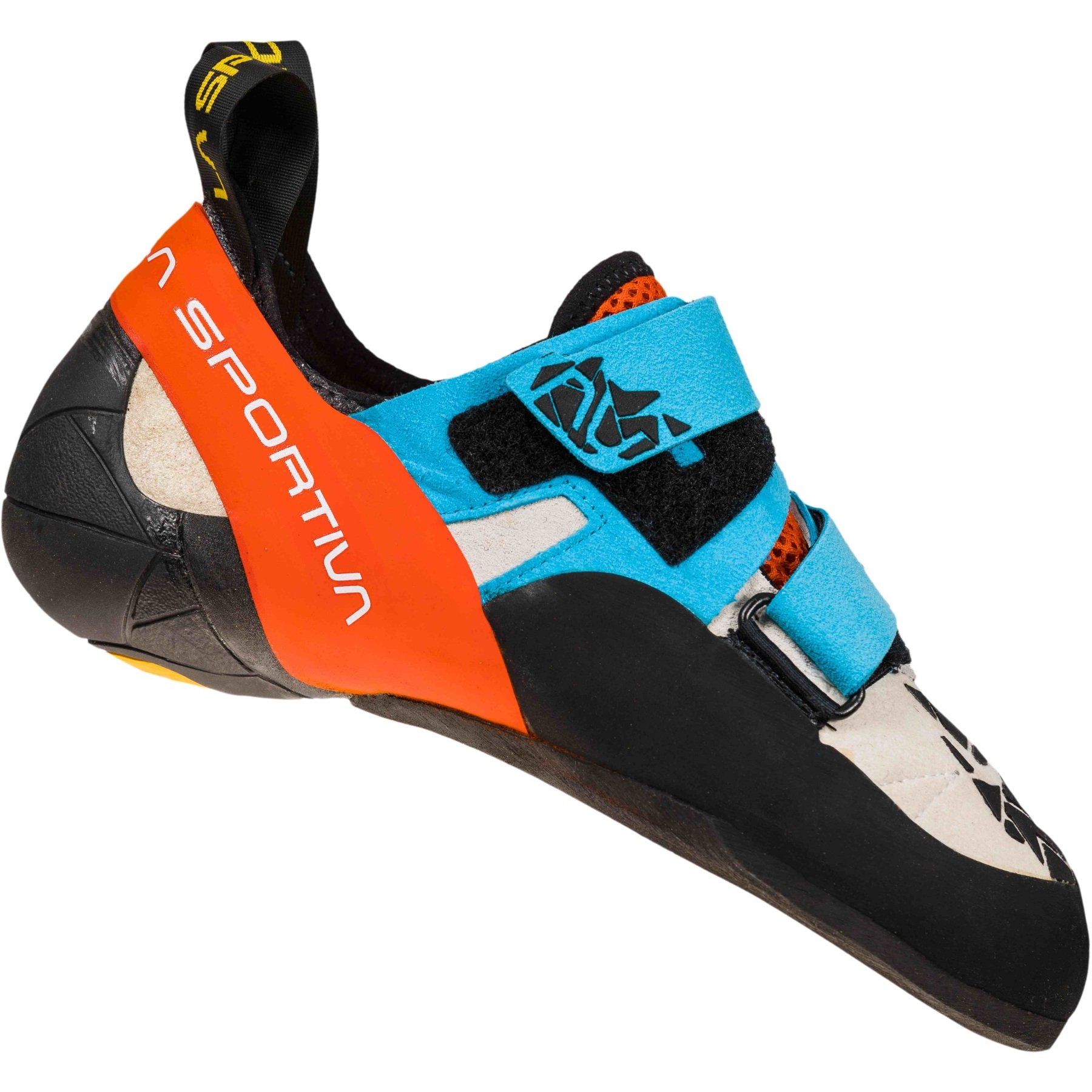 La Sportiva OTAKI Climbing Shoe was f our editors pick. The upper material of this La Sportiva OTAKI is 100% manufactured material and this guarantees that your foot shielded from water. The solidness of these shoes is additionally astonishing as some full grain calfskin material was incorporated. A quality microfiber was additionally included to guarantee that solace and dependability during your rope climbing sport are cooked.
La Sportiva OTAKI Climbing Shoe was f our editors pick. The upper material of this La Sportiva OTAKI is 100% manufactured material and this guarantees that your foot shielded from water. The solidness of these shoes is additionally astonishing as some full grain calfskin material was incorporated. A quality microfiber was additionally included to guarantee that solace and dependability during your rope climbing sport are cooked.
A superb pacific coating was utilized on the front side of the shoes to guarantee that your toes are agreeable through the rope climbing process. A quality laspoflex material was utilized to plan the shoes. Laspoflex estimates 1.1 mm in this manner offering your foot with all the solace required.
Movable lash that was highlighted plays the job of climbing shoe conclusion choice. The movable idea of these shoes guarantees that whether or not you have wide or even limited feet you are certainly going to partake in an agreeable fit. Both the insoles of and neckline of this OTAKI Climbing Shoe were expertly cushioned to guarantee that solace is an assurance.
Key Features
- Upper Material: leather, microfiber
- Lining: [front] Pacific
- Closure: hook-and-loop
- Midsole: 1.1mm LaspoFlex
- Rubber: Vibram XS Edge (4mm)
Pros
- Comfortable shoes
- Adjustable closing straps
- Adjustable fit
- Synthetic hence waterproof
Cons
- Weighs 99 pounds
Conclusion
Having rope climbing shoes that perfectly meet all your rope climbing shoe needs should never be compromised when venturing into rope climbing.no matter the model or brand of rope climbing shoes you pick ensure that performance. Comforts and stability are present. Rope climbing entails lots of activities that require foot comfort and stability.
The best shoes for rope climbs should be typically designed to offer the ideal grip when ascending or descending on the rope. The design should also guard the fabrics on the upper part of the shoe from abrasion or ripping off.
If you already own some cross training shoes, check whether they are designed for rope climbing. If they’re not labelled so, then you can choose from the above options.
Frequently Asked Questions
1. Do you have to be strong to climb a rope?
“In terms of sticking points with climbing the rope, most commonly people don’t have the requisite upper-body strength, in particular, pulling strength,” Rosales says. “It does not matter if you have the right technique to climb the rope because you still need the strength to pull yourself up.”
2. Is it OK to use running shoes for cross training?
Whether you run, jump, lift, dance, or stretch, a pair of Nike cross trainers can support you through varied activities in your training. There’s no need to bring a separate pair of running shoes and weightlifting shoes to the gym. Heavier folks often have wider feet.
3. What’s the difference between training shoes and running shoes?
Sole flexibility running shoes are for heel-to-toe movement. Training shoes are for multi-directional movement, especially lateral (side-to-side) movement. The sole of a training shoe is more flexible to allow a wide range of movement.
4. Do rope climbs build muscle?
Your muscles will be conditioned to perform difficult tasks for a long period easily. … Even though you may assist yourself with your legs, the greatest weight is still carried by the upper body muscles. Just like other pulling exercises in the CrossFit gym, rope climbing will build your upper body strength.
5. Is climbing a rope healthy?
Develop your physical and mental strength with rope climbing. A great way to develop grip, rope climbing helps build biceps and upper body. It helps develop physical and mental strength. If performed correctly rope climbing helps develop endurance and ability to master your own weight.
Discover the secret to optimal health and well-being with these 10 essential nutrition tips for nourishing your mind and body.
Table of Contents
Whether you’re a seasoned gym-goer or just beginning your fitness journey, crafting a comprehensive workout and nutrition plan is key to achieving your fitness goals. By combining the right exercises with proper nutrition, you can optimize your performance, reach your target weight, and improve your overall health. In this blog post, we will explore tips for setting fitness goals, creating a workout plan, establishing a nutrition plan, finding the right gym, staying motivated, overcoming plateaus, listening to your body, and tracking your progress.
Setting Fitness Goals
Before embarking on your fitness journey, it’s essential to identify your specific goals. Do you want to lose weight, build muscle, improve cardio endurance, or enhance flexibility? Setting realistic timelines for achieving these goals will help you stay focused and motivated throughout your fitness journey.
Creating a Workout Plan
Consulting with a fitness professional or trainer can provide valuable insight into designing a workout plan that aligns with your goals. A well-rounded workout routine should include a mix of cardio, strength training, and flexibility exercises to target different muscle groups and improve overall fitness.
Establishing a Nutrition Plan
Nutrition plays a crucial role in fueling your workouts and supporting your body’s recovery. Consulting with a nutritionist or dietitian can help you calculate your caloric needs based on your fitness goals. Designing a balanced meal plan that includes a variety of nutrients will ensure that your body has the fuel it needs to perform at its best.

Image courtesy of in.pinterest.com via Google Images
Finding the Right Gym
Choosing the right gym is essential for creating a comfortable and motivating workout environment. Researching gyms in your area and touring facilities to assess equipment, amenities, and class offerings can help you find a gym that meets your needs and preferences.
Staying Motivated
Setting smaller milestones along the way can help you track your progress and celebrate your achievements. Rewarding yourself for hitting milestones, finding a workout buddy, or joining group classes for accountability can help you stay motivated and committed to your fitness goals.

Image courtesy of www.linkedin.com via Google Images
Overcoming Plateaus
Plateaus are a common occurrence in any fitness journey. To overcome plateaus, consider switching up your workout routine, reevaluating your nutrition plan, and seeking advice from fitness professionals. Making small adjustments can help you break through barriers and continue making progress.
Listening to Your Body
Listening to your body is crucial in preventing injuries and avoiding burnout. Paying attention to signs of overtraining, practicing proper form during exercises, and making adjustments to your plan based on how your body responds can help you stay healthy and injury-free.

Image courtesy of chponline.com · In stock via Google Images
Tracking Progress
Keeping track of your progress is essential for staying motivated and making adjustments to your plan as needed. Keeping a workout and nutrition journal, taking measurements and progress photos regularly, and using apps or trackers to monitor your fitness and nutrition goals can help you stay on track and achieve success.
In conclusion, a comprehensive workout and nutrition plan is essential for achieving your fitness goals. By setting realistic goals, creating a well-rounded workout routine, establishing a balanced nutrition plan, finding the right gym, staying motivated, overcoming plateaus, listening to your body, and tracking your progress, you can optimize your performance, reach your target weight, and improve your overall health. Remember to stay dedicated and persistent in your fitness journey, and you will see progress and results over time.
Discover the secrets to crushing your fitness goals and staying inspired on your health journey. Say goodbye to excuses!
Table of Contents
Are you looking to improve your health, boost your energy levels, and feel more confident in your own skin? If so, you’ve come to the right place. In this comprehensive guide, we will cover everything you need to know to achieve your fitness goals, including health tips, workout suggestions, nutrition advice, and gym plans. By incorporating these strategies into your daily routine, you can set yourself up for success on your fitness journey.
Health Tips
Staying on top of your health is crucial when it comes to achieving your fitness goals. This includes getting an adequate amount of sleep each night, staying hydrated throughout the day, and managing stress effectively. Prioritizing your health not only benefits your physical well-being but also enhances your mental clarity and emotional resilience.
Workout
When it comes to workouts, variety is key. Consider incorporating a mix of cardio, strength training, and flexibility exercises into your routine. It’s important to focus on proper form and technique to prevent injuries and maximize the effectiveness of your workouts. Depending on your fitness goals, you can adjust the intensity and duration of your workouts accordingly.
Nutrition
Alongside regular exercise, nutrition plays a crucial role in supporting your fitness goals. Balancing your macronutrients (protein, carbohydrates, and fats) is essential for fueling your workouts and aiding in muscle recovery. Opt for whole, nutrient-dense foods whenever possible and aim to plan your meals in advance to stay on track.

Image courtesy of www.australiawidefirstaid.com.au via Google Images
Gym Plan
Creating a gym plan that aligns with your fitness goals is a great way to stay motivated and accountable. Start by setting achievable goals and mapping out a workout schedule that fits into your weekly routine. Tracking your progress can help you stay on course and make necessary adjustments to your gym plan as needed.
Understanding Macronutrients
Macronutrients, including protein, carbohydrates, and fats, are the building blocks of a well-rounded diet. Protein aids in muscle repair and growth, carbohydrates provide energy for workouts, and fats support overall health. By understanding the role of each macronutrient, you can optimize your nutrition plan and enhance your fitness results.

Image courtesy of www.pinterest.com via Google Images
Types of Workouts
Cardio, strength training, and flexibility exercises all offer unique benefits to your fitness journey. Cardio workouts improve cardiovascular health, strength training builds lean muscle mass, and flexibility exercises enhance mobility and reduce the risk of injury. Incorporating a variety of workouts into your routine can keep things interesting and help you target different aspects of fitness.
Meal Planning
Meal planning is a game-changer when it comes to staying on track with your nutrition goals. By planning and prepping your meals in advance, you can ensure that you have healthy options readily available throughout the week. Creating balanced meals that include a mix of protein, carbohydrates, and fats will support your workouts and help you reach your fitness goals faster.
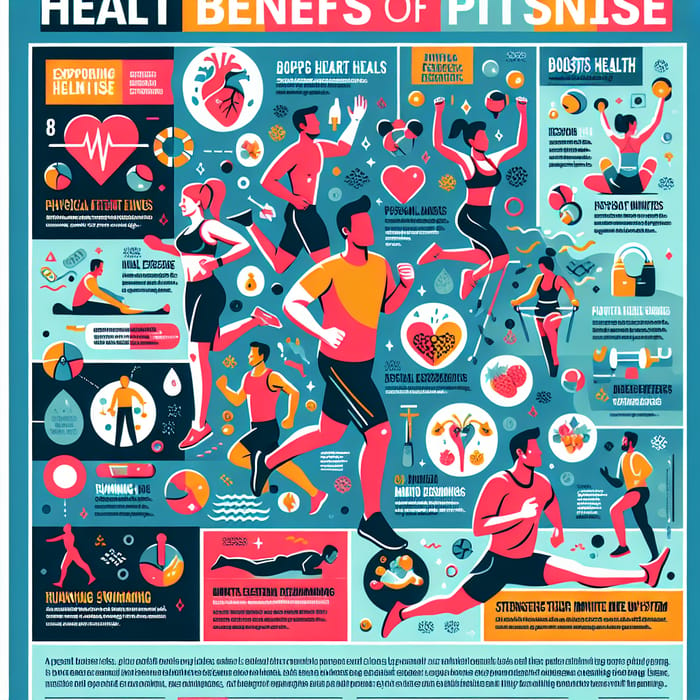
Image courtesy of easy-peasy.ai via Google Images
Tracking Progress
Tracking your progress is essential for measuring your success and making informed decisions about your fitness journey. Whether you track your weight, measurements, or workout frequency, keeping tabs on your progress can help you stay motivated and identify areas for improvement. Use this information to adjust your gym plan and nutrition strategy as needed.
In conclusion, achieving your fitness goals requires a holistic approach that encompasses health tips, workouts, nutrition, and gym plans. By incorporating these strategies into your daily routine and staying consistent with your efforts, you can make meaningful progress toward a healthier, fitter you. Remember, fitness is a journey, not a destination, so be patient with yourself and celebrate your wins along the way.
Best protein powder under $1000
Whey protein is the best quality protein that is accessible for wellness devotees. Any individual who is a customary exercise center participant, a jock, or even who works out truly hard can burn-through whey protein. The best whey protein in India can assist you with working out the muscles you have been yearning for. It very well may be truly hard to pick a spending plan for whey protein under 1000 for your muscle needs. That is the reason we have investigated and presented a rundown of the 10 best whey proteins under 1000 in India. Without burning through additional time let us straight jump on the rundown and assist you with picking the best one!
1. NAKPRO Platinum Whey Protein Isolate 90%
 Nakpro platinum whey Protein isolate is Genuine and Authentic, Imported from the USA, and pressed in India fulfilling the best guidelines. This is a rich wellspring of protein that assists with building slender muscle, improves recuperation, upholds solid digestion, and decreases muscle misfortune. We rank this as the tenth on our rundown of the best whey protein under 1000.
Nakpro platinum whey Protein isolate is Genuine and Authentic, Imported from the USA, and pressed in India fulfilling the best guidelines. This is a rich wellspring of protein that assists with building slender muscle, improves recuperation, upholds solid digestion, and decreases muscle misfortune. We rank this as the tenth on our rundown of the best whey protein under 1000.
Key Features
- Nakpro Platinum Whey Protein Isolate is 100% Shipped whey protein isolate supplement medicine and conveys 30.4 of proteid per 33g accepting size and Protein makes a fundamental part of your eating regimen. Acquire slender muscles more than ever, with NAKPRO sustenance whey protein and whey protein isolate powder comprises protein in each helping which triggers the blend of modern muscle muscles and lifts muscle recuperation.
- MUSCLE Increase: Platinum whey protein Isolate is broadly utilized in the Athletic and working out networks to help muscle development when utilized related to work out and It has been utilized for quite a long time as a speedy wellspring of proteid after exercises. PLATINUM Whey Protein Isolate is a low-carb protein powder and sugar-free protein powder.
- Predominant NUTRITION AND FORMULATION: NAKPRO platinum whey Protein isolate Theorems is to improve ideal wellbeing among highest caliber, powerful, generous, and unrivaled plan of dietary enhancements; Our clients can be guaranteed immaculateness, worth, and strength.
- IDEAL FOR: Anyone from wellness aficionado to jock hoping to work on their general wellness, construct and keep up with fit muscle or get thinner. Incredible for keto or other severe low carb abstain from food. Low calorie makes it extraordinary for weight reduction plans and dinner substitution shakes.
- Complete Flavor FLEXIBILITY: Nakpro platinum whey protein isolate is an unsweetened and unflavoured high protein supplement that can be devoured in an assortment of ways like protein cakes, protein shakes, smoothies, protein bars, and so forth Add any kind of your decision for a tasty treat.
- Predominant Models: platinum whey Protein Isolate goes through thorough testing, condition analysis, and outsider appraisal to guarantee an exceptional mix. We guarantee immaculateness, wellbeing, and standing among our items so your wellbeing is rarely compromised.
Specifications
- Ingredients Whey Protein Isolate
- Flavour Unflavoured
- Brand NAKPRO
- Thing Weight 1000 Grams
- Allergen Information Milk
- Thing Dimensions LxWxH 15 x 15 x 20 Centimeters
- Thing Form Powder
- This is a vegetarian item.
Pros
- Has no misleadingly added substance
- Without GMO, sans hormone, and gluten-free
- Exceptionally efficient whey protein
- Brings an excellent amount to the table
- This whey proteid most appropriate for any sort of trembles or beverages
Cons
- The external box neglects to communicate an exceptional energy
- This powder structures odd knots
- The taste most likely doesn’t feel normal using any and all means
- Its scent is somewhat unpleasing
2. TruNativ Raw Whey Protein Concentrate Powder 500 gm
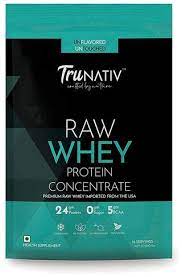 At amount 9 on our rundown of the greatest whey protein below Rs. 1000 in India, we have TruNativ and The key fixings are of the greatest property and have been obtained from Glanbia and the biggest Whey makers in the USA and This is totally legitimate and contains no steroids, pollutants, or added substances.
At amount 9 on our rundown of the greatest whey protein below Rs. 1000 in India, we have TruNativ and The key fixings are of the greatest property and have been obtained from Glanbia and the biggest Whey makers in the USA and This is totally legitimate and contains no steroids, pollutants, or added substances.
Key Features
- Each scoop (30 gms) TruNativ Raw Whey Protein Concentrate gives 24 gms of protein and 5.4 gms of BCAA with exceptionally low carbs (1.8 gms)
- It helps accomplish a slender body by building muscles impeccably, decreases muscle misfortune, and animates muscle recuperation post exercises. Utilized by maturing models, fashionistas, and jocks because it helps acquire fit muscle. A most ideal choice for exercise center participants to recapture their fundamental protein. Can be devoured either previously or after exercise meetings.
- It is 100% Natural and Pure whey protein with the least conceivable carbs. NO debasement, NO added substances, NO additives, NO sugar, and NO shading specialist, NO seasoning specialist, NO maltodextrin, NO Corn, NO Starch. NO substance proteins or digestives. It is PURE, the best-case scenario. In its unflavoured structure, you can add flavor or product of your decision each time you take your portion
- Key wholesome fixing is certifiable and obtained from the USA. Unadulterated protein is acquired from the milk of glad cows
- It is a protein powder that is exceptionally simple to blend and processes rapidly. This is a solitary pack of 500 gms
Specifications
- Ingredients Protein Concentrate
- Flavour 500 gms
- Brand TruNativ
- Thing Weight 500 Grams
- Thing Dimensions LxWxH 15 x 10 x 4 Centimeters
- Thing Form Powder
- This is a Vegetarian item.
Pros
- Contains no synthetic compounds or digestives
- Has no sugar or shading, specialists
- Can be burned through either previously or after exercise meetings
- In its Unflavoured structure, you can add flavor or organic product
- It is extremely simple to blend in a shaker
Cons
- This whey isn’t sans lactose
- The bundling isn’t simply incredible
- This might cause bulging at first
- The scoop contains 22gm powder rather than 30gm
3. Osoaa 100% Whey Protein Concentrate Powder
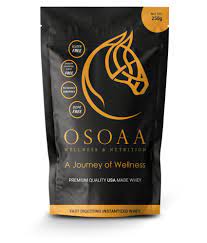 Oscar is the right mix of Slow and Fast delivering protein to guarantee your body gets what it needs after an incredible exercise. It has been defined to give you the best fixings to acquire size and strength.
Oscar is the right mix of Slow and Fast delivering protein to guarantee your body gets what it needs after an incredible exercise. It has been defined to give you the best fixings to acquire size and strength.
Key Features
- HIGH protein content: A characteristic Whey protein among a high measure of protein [26.4g protein per 33g plateful] that assists with building fit muscle, helps muscle wellbeing, helps in protein union, and helps Healthy muscle also, to furnish your body with the additional advantage that catches your exercise to a higher level
- Fundamental nutrients: Osoaa whey proteid Concentrate’s individually serving [33g] accompanies 26.4g protein, 16gears, 5.2g bcaas, 4g Glutamine, 130 Calories, including no fake development chemical [rbst] that guarantees you among the most flawless whey, expands the recuperation rate and helps muscle past your past limits.
- HELPS muscle Construction: It assists work with inclining bulk as it accompanies every one of the 13 fundamental amino drugs which improve protein blend and Lead to sound muscle.
- Supports IMMUNE SYSTEM: Osoaa whey protein Concentrate assists with adjusting resistant capacities by supporting glutathione creation in different tissues that assistance to your body from an assortment of sicknesses. It additionally assists you with a weight assuming that you supplant different dinners with it alongside strength preparing.
- RESULTS During More high-grade Administration: Expressed with the Natural Premium quality Whey, Osoaa whey protein Concentrate Possesses Met All the Strict Examples with an Excellent Filtration Method That Gently Prepares Whey to help the Protein Construction from Growing Denatured and to Check Nutrient Loss.; Packaging Content: 1 100% Whey Concentrate Unflavoured; color: black; quantity: 1 Kg (30 Serving)
Specifications
- Ingredients 100% Whey Protein Concentrate
- Flavour Unflavoured
- Brand OSOAA
- Thing Weight 1 Kilogram
- Allergen Information Soy Free
- Diet Type Vegetarian
- Protein Source Whey
- Thing Form Powder
Pros
- It has no gluten, additives, added substances, or fillers
- Osoaa Whey Protein is not difficult to process
- The bundling is great and simple to utilize
- It tends to’s be processed easily
- The lingering flavor of this whey protein is incredible
- Its mixability with different substances is sufficient
Cons
- They guarantee about the protein content to be 26.4gm and there’s no lab report demonstrating it
- Sets aside longer effort to show results
4. Bigmuscles Nutrition Protein 26g
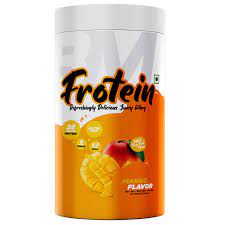 Out of the blue, you can get both, sustenance and reward, with our one of its sort equation! At Big Muscles, we have been reliably advancing to get the perfect mixes of enhancements. It has the taste of a supplement is a vital part of sustenance. This whey protein.
Out of the blue, you can get both, sustenance and reward, with our one of its sort equation! At Big Muscles, we have been reliably advancing to get the perfect mixes of enhancements. It has the taste of a supplement is a vital part of sustenance. This whey protein.
Key Features
- Progressive Protein: A scrumptious and incredible natural product curve to your normal whey protein
- Best made shockingly better: a top-notch plan of 26g protein from hydrolyzed and separate whey protein framework alongside 15g fundamental amino acids, 6g glutamine, 5.5g BCAAs, and 0g sugar per serving
- Scrumptiously Fruity: Incredible invigorating, light, and fresh whey protein with an indistinguishable taste like that of natural product juices. Accessible in 5 fruity flavors Pineapple, Guava, Mango Orange, Litchi, and Mango
- Way of life Whey: A unisexual whey protein that helps wellness aficionados in building physical make-up as well as goes about as a flavorful and good supper substitution for all – understudies, office conveyors, and weight lifters
- Weight training: Protein contains a quick retaining whey protein grid that assists work with inclining muscles, upholds post-exercise muscle recuperation, and get ready for intense exercises
- Feast Replacement: No more skipping dinners since you don’t have time, take yummy protein shakes to feel full, and fight the temptation to go after undesirable bites.
- Whenever Protein: Post-exercise, between suppers, as a tidbit, or as a treat, it doesn’t make any difference – Protein is planned to be your any season of day protein powder.
- Cutting edge: Well investigated new age protein plan which satisfies your day by day protein needs, upholds your eating regimens and wellness schedules. Keto-accommodating, sports safe, without gluten and no additional soy
- Plans: Indulge in smooth and delightfully shakes, smoothies, treats, and hotcakes to pacify your yearnings with zero culpability
Specifications
- Ingredients Whey protein concentrate, Whey protein confine, Hydrolysed whey protein, Nature indistinguishable flavors
- Flavour Pineapple
- Brand Bigmuscles Nutrition
- Thing Weight 0.5 Kilograms
- Thing Dimensions LxWxH 6 x 1.6 x 10 Centimeters
- This is a Vegetarian item.
Pros
- Unimaginable reviving, light, and fresh whey protein
- Contains positively no sugar, gluten, and lactose
- Being hydrolyzed protein frames a smooth shake
- It’s an exceptionally savvy whey protein
- Doesn’t bring on any assimilation issue
- Has a generally excellent and fruity taste
Cons
- Does truly minimal after an extreme exercise
- Since it utilizes natural product extricates so this is very sweet
5. Abbzorb Nutrition Whey Protein with Digestive Enzymes
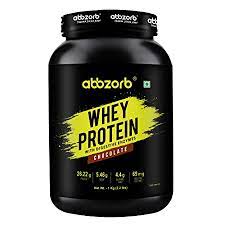 Abbzorb Nutrition’s Whey Protein is a mix of whey protein segregate and whey protein concentrate and our restrictive recipe conveys driving 79% protein, a step over the business highest quality level. Abbzorb whey protein utilizes quick retaining ultra-separated whey protein confine and thinks imported from the USA. item is made in a GMP consistent office that is FSSC 22000 guaranteed.
Abbzorb Nutrition’s Whey Protein is a mix of whey protein segregate and whey protein concentrate and our restrictive recipe conveys driving 79% protein, a step over the business highest quality level. Abbzorb whey protein utilizes quick retaining ultra-separated whey protein confine and thinks imported from the USA. item is made in a GMP consistent office that is FSSC 22000 guaranteed.
Key Features
- ABOVE This GOLD STANDARD-With 26 grams of protein for each scoop, Abbzorb Whey Protein conveys industry driving 79% protein.
- 100% WHEY PROTEIN (MANUFACTURED IN USA)- Abbzorb Whey Protein utilizes quick engrossing ultra-sifted whey protein confine and concentrates imported from the USA.
- LAB TESTED/REPORT-Abbzorb Nutrition guarantees you with ensured LAB REPORT (SGS – NABL Govt. Certify lab) with each buy which can be downloaded after you have put in the request.
- DIGESTIVE ENZYMES-Each serving of Abbzorb Whey Protein contains 66mg of stomach-related chemicals. Helps in the simple retention of protein.
- NO ADDED SUGAR and SOY PROTEIN-Abbzorb Whey Protein doesn’t contain any additional sucrose or Soy protein. It additionally doesn’t contain any additives.
Specifications
- Ingredients Protein Blend, Cocoa Powder, Thickeners, Enzyme Protease
- Flavour Chocolate
- Brand Abbzorb sustenance
- Thing Weight 1000 Grams
- Thing Dimensions LxWxH 16.5 x 16.5 x 27.9 Centimeters
- Protein Source Whey
- Thing Form Powder
- This is a Vegetarian item.
Pros
- Doesn’t contain any additional sucrose or soy protein
- Liberated from any sorts of fillers or additives
- Has an astonishing taste
- The mixability is likewise excellent
- Shows viable outcomes very quick
- Accompanies stomach related chemicals to help protein processing
Cons
- It needs more amount
- This has a restorative smell emerging from it
6. Zenith Nutrition Mass Gainer++ with Enzyme blend
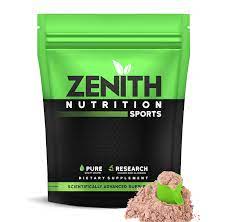 Pinnacle Sports Mass Gainer is Enriched with the right extent of supplements that can be burned through whenever of the day to sustain the body and is fitting for novices just as genuine mass addition coaches. This is appropriately at the fifth situation on our rundown of the best whey protein under 1000 in India.
Pinnacle Sports Mass Gainer is Enriched with the right extent of supplements that can be burned through whenever of the day to sustain the body and is fitting for novices just as genuine mass addition coaches. This is appropriately at the fifth situation on our rundown of the best whey protein under 1000 in India.
Key Features
- HIGH PROTEIN and Speedy Metabolism: Zenith Whey conveys 26g protein out of 35g in each serving to assist you with receiving the principal in return. The untouched reasonable for utilization protein is defined with a compound mix containing Protease, Lactase, Lipase, Amylase, Alpha-galactosidase, Glucoamylase, Invertase and Cellulase to help most extreme absorption and to abstain from swelling.
- LAB Questioned FOR Condition: Manufactured under severe management at FSSAI endorsed and GMP ensured manufacturing plant. The normalized Lab test examination guarantees the presence of expected fixings and nonappearance of debasements and weighty metals.
- Reestablishes ANABOLIC Scales: A accepted mix of Whey Proteins, with the most elevated PDCAA score of 1 uses Whey Isolate, as the central wellspring of protein to spike the muscle protein combination for longer.
- HELPS AMP YOUR Conditioning: Zenith Whey Protein comes improved with 5.5g of BCAA per serving to help with lessening weariness and amp your exercise. BCAA is the way to improve muscle development with obstruction work out.
- LOW-CALORIE INTAKE: The protein is mixed with the normal pleasantness of stevia and is particularly suitable for calorie-cognizant people with raised blood glucose levels and individuals who need to restrict sugar in their eating routine. Furthermore, the high amount of fundamental amino corrosive forestalls losing your muscles during the weight reduction venture.
Specifications
- Contains 26g of protein
- This is made of whey protein
- A recognized mix of Whey Proteins, with the most noteworthy PDCAA score
- Suggested Dosage: 2 scoops with milk and water
- This whey protein is a veggie-lover item
- Amount: 1050 gms
- Client Rating: 3.9 stars out of 5
Pros
- The character is great
- Shows results super quick
- This whey protein can blend well
- The protein is mixed with the normal pleasantness of stevia
- This whey protein is FSSAI supported
- The untouched reasonable for utilization protein
Cons
- May make you cause breakouts
- Has a fragrance of plastic some of the time
Conclusions
Did you like this article? Then, at that point, do impart it to your loved ones. Do tell us your input in the remarks segment beneath. Likewise, remember to tell us your pick of the most loved whey protein under 1000 in India.
Frequently Asked Questions
1. Do protein shakes actually help?
Therefore, protein shakes may help you achieve your fitness goals, whether you want to lose fat or gain muscle. Protein shakes promote muscle gain and improve performance and recovery. They also prevent muscle loss and may even help increase muscle mass during weight loss.
2. Is MuscleTech a good brand?
Industry-giant MuscleTech has been around for nearly 25 years, but in supplement-business years, that can feel more like 80. With start-ups emerging every year trying to be the next, well, MuscleTech, this mighty company has earned a place as a standard-bearer in quality, innovation, volume, and global reach.
3. Is Herbalife healthy?
BOTTOM LINE: The Herbalife diet is pricey and involves highly processed shakes and many supplements, some of which have been linked to negative health effects. Short-term use likely causes weight loss, but long-term effectiveness is yet to be studied.
4. Why is protein powder bad for you?
It may be high in added sugars and calories. Some protein powders have little added sugar, and others have a lot (as much as 23 grams per scoop). Some protein powders wind up turning a glass of milk into a drink with more than 1,200 calories. The risk: weight gain and an unhealthy spike in blood sugar.
5. Is it bad to drink 2 protein shakes a day?
In most cases, drinking two protein shakes per day won’t negatively impact your diet. Protein shakes promote muscle synthesis and help to repair your muscles after working out. … While most doctors won’t recommend supplementing each meal with a protein shake or drinking them too often, two per day isn’t dangerous.
6. What protein do bodybuilders use?
For bodybuilders, whey protein provides amino acids used to aid in muscle recovery. Whey protein is derived from the process of making cheese from milk. There are three types of whey protein: whey concentrate, whey isolate, and whey hydrolysate.
7. Is GNC a good brand?
GNC is a trusted marketplace that makes shopping easy and offers a huge selection. You’re going to find the product you’re looking for here. They hold their products to high standards in terms of quality, exceeding what you occasionally find elsewhere. For non-GNC brands, you’ll want to do a little research.
8. Does protein increase testosterone?
High protein diets and a high protein to carbohydrate ratio have been associated with altering resting concentrations of testosterone [9,10], cortisol [11], and insulin-like growth factor concentrations [4,12], but its effect on resting growth hormone concentrations remain inconclusive.
9. Which protein is best for fat loss?
The scientific evidence is strongest in support of natural protein from foods, as well as whey and casein protein supplements for weight loss. A protein intake between 0.5–1 gram per pound of body weight (1.2–2.2 grams/kg) daily, or 25–35% of total daily calories, seems most beneficial for weight loss.
10. Are whey protein safe?
Despite its health benefits, some people are concerned about its safety. That said, whey protein is safe for most people and a convenient way to increase your protein intake. Summary: Whey protein is generally safe and can help you build muscle and strength, lose weight, reduce your appetite and boost your metabolism.
11. Why Herbalife is banned?
The court decided that “Herbalife is in breach of Articles 91, 4 and 99 of the Act regarding market practices and consumer protection because it has established, managed or promoted a pyramid scheme, whereby the consumer or a business stands to make money which is more likely the result of introducing new consumers or
12. Is Virat Kohli using Herbalife products?
It is not surprising that most of Herbalife’selebrity users are sports personalities as Herbalife is a nutrition schemed product. Virat Kohli, one of India’s most proficient cricketers, is one of the Herbalife brand ambassadors in Asia.
Discover the ultimate gym plan that will help you crush your fitness goals and achieve the body you’ve always dreamed of.
Table of Contents
Looking to elevate your fitness game and reach your goals at the gym? A key factor in succeeding is creating a balanced workout and nutrition plan that supports your objectives. In this blog post, we will provide you with practical tips and strategies to optimize your workout and nutrition plan at the gym. Let’s dive in!
Setting Realistic Goals
Before starting your fitness journey, it’s important to establish realistic and achievable goals. Setting specific, measurable, achievable, relevant, and time-bound (SMART) goals will help you stay focused and motivated. Whether your goal is weight loss, muscle gain, or improving overall health, having a clear objective will guide your workout and nutrition plan.
Creating a Balanced Workout Plan
When designing your workout plan, aim for a mix of cardio, strength training, and flexibility exercises. Incorporating variety into your routine not only helps prevent plateaus but also ensures you’re working different muscle groups and enhancing overall fitness. Be sure to include both resistance and aerobic exercises to promote strength, endurance, and flexibility.
Fueling Your Body with Proper Nutrition
What you eat plays a crucial role in your fitness journey. Focus on consuming a balanced diet rich in protein, healthy fats, complex carbohydrates, vitamins, and minerals. Meal planning and preparation can help you maintain a nutritious diet and avoid unhealthy food choices. Remember, food is fuel, so prioritize nutrient-dense options to support your workouts and recovery.

Image courtesy of via Google Images
Hydration
Staying hydrated is essential for optimal performance during workouts and overall health. Water helps regulate body temperature, lubricate joints, and transport nutrients to cells. Make it a habit to drink an adequate amount of water throughout the day, especially before, during, and after exercise. Consider incorporating electrolyte-rich beverages for longer or more intense workouts.
Recovery and Rest
Rest and recovery are often underestimated but are critical components of fitness success. Adequate sleep, rest days, and proper recovery techniques are essential for muscle repair, growth, and overall well-being. Listen to your body and prioritize rest to prevent burnout and injury. Remember, progress is made during recovery!

Image courtesy of via Google Images
Tracking Progress
Monitoring your progress is key to staying on track with your fitness goals. Keeping a workout and nutrition journal, using fitness apps, or tracking measurements and performances will help you assess your progress objectively. Regularly evaluate your results, celebrate your achievements, and make adjustments as needed to continue progressing towards your goals.
Overcoming Challenges
During your fitness journey, you may encounter challenges that test your commitment and motivation. Common obstacles like time constraints, lack of motivation, or plateaus are normal but can be overcome with the right strategies. Stay focused on your goals, seek support from peers or professionals, and adapt your plan as needed to navigate through challenges successfully.

Image courtesy of via Google Images
Seeking Professional Advice
When in doubt or facing specific obstacles, consider seeking guidance from fitness professionals such as personal trainers, nutritionists, or health coaches. These experts can provide tailored advice, personalized workouts, and nutrition plans to help you reach your goals effectively. Investing in professional support can accelerate your progress and ensure long-term success.
In conclusion, optimizing your workout and nutrition plan at the gym requires commitment, consistency, and strategic planning. By setting realistic goals, creating a balanced workout routine, fueling your body with proper nutrition, staying hydrated, prioritizing rest and recovery, tracking progress, overcoming challenges, and seeking professional advice when needed, you can maximize your fitness results and achieve your goals. Remember, progress is a journey, not a destination. Stay dedicated, stay focused, and enjoy the rewards of a healthier and stronger you!
Discover the secrets to maintaining a healthy lifestyle while working remotely, including tips for staying active and eating well.
Table of Contents
In today’s fast-paced world, staying healthy can be a challenge, especially when working from home. Incorporating a balance of workout routines, proper nutrition, and a structured gym plan can help you maintain your health and well-being even from the comfort of your own home.
Setting Fitness Goals
Evaluating your current fitness level is essential in setting realistic goals for yourself. Whether you are looking to lose weight, build muscle, or simply improve your overall health, having a clear vision of what you want to achieve can help you stay motivated and focused.
Creating a Workout Routine
When it comes to staying healthy while working from home, a well-rounded workout routine is key. Incorporating a mix of cardiovascular, strength training, and flexibility exercises can help you improve your fitness level and overall health. Consider activities that you enjoy to maintain motivation and make your workout sessions more enjoyable.
Balancing Nutrition
Eating a balanced diet is equally important when it comes to staying healthy. Focus on consuming a variety of fruits, vegetables, lean proteins, and whole grains while limiting processed foods and sugary drinks. Meal prepping can also help you stay on track with your nutrition goals.

Image courtesy of via Google Images
Tracking Progress
Keeping a workout and nutrition journal can help you monitor your progress and make adjustments as needed. Tracking your meals, workout sessions, and progress towards your fitness goals can provide valuable insights into what is working well for you and what areas may need improvement.
Time Management
Developing a schedule that includes regular workout sessions and meal prep is essential for staying healthy while working from home. Prioritizing your health by making time for exercise and healthy eating can help you maintain a balanced lifestyle.
Image courtesy of via Google Images
Choosing the Right Gym
When it comes to selecting a gym for your workout sessions, consider factors such as location, equipment available, classes offered, and membership options. Visiting different gyms to find the one that best fits your needs can help you create a workout environment that is motivating and conducive to your fitness goals.
Working with a Personal Trainer
Working with a personal trainer can provide you with personalized workout plans, form correction, and accountability. Discussing your goals with a trainer can help you create a tailored fitness plan that is designed to help you achieve your desired results.
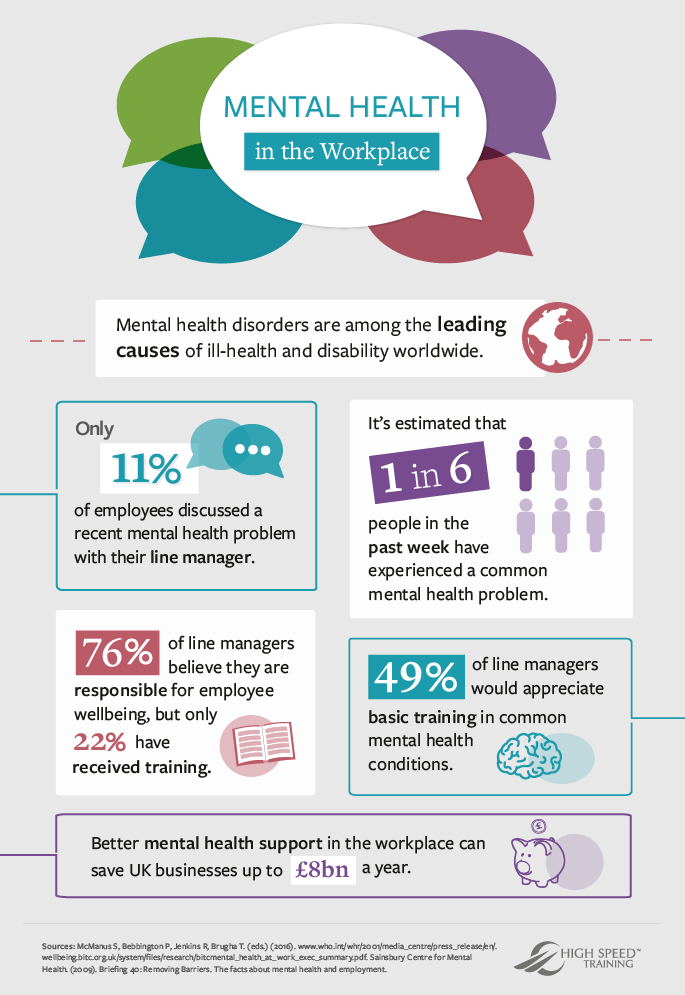
Image courtesy of via Google Images
Staying Motivated
Staying motivated while working from home can be challenging, but setting rewards for reaching milestones in your fitness journey can help keep you engaged and motivated. Finding a workout buddy or support group can also provide you with the extra motivation and encouragement you need to stay on track with your health goals.
Consistency is Key
Consistency is key when it comes to staying healthy while working from home. Stay committed to your workout, nutrition, and gym plan for long-term health benefits. Making adjustments as needed to keep your routine challenging and rewarding can help you maintain a healthy lifestyle.
Unlock the secret to a healthier you with these 10 nutrition hacks that will revolutionize your eating habits for good.
Table of Contents
In today’s fast-paced world, maintaining a healthy lifestyle can be a challenge. However, with the right guidance and strategies, it is possible to achieve your fitness goals and lead a healthier life. This comprehensive guide will cover essential tips, workouts, nutrition advice, and gym plans to help you on your journey to a fitter and healthier you.
Health Tips
Taking care of your health is crucial when embarking on a fitness journey. Making small adjustments to your daily routine can have a significant impact on your overall well-being. Staying hydrated throughout the day is essential to support your energy levels and recovery. Additionally, ensuring you get an adequate amount of sleep each night allows your body to repair and regenerate. Incorporating stretching into your pre and post-workout routine can help prevent injuries and improve flexibility. Lastly, listen to your body and rest when needed to avoid burnout and overtraining.
Workouts
Choosing the right workouts for your fitness goals is key to seeing progress. Whether you prefer strength training, cardio, or flexibility exercises, there are various options to suit your preferences. Sample workout routines for beginners, intermediate, and advanced levels can provide structure and guidance. Staying motivated and consistent with your workouts is essential for long-term success. Set achievable goals and track your progress to stay accountable and motivated.
Nutrition
A balanced diet full of nutrients is crucial for fueling your workouts and promoting overall health. Meal planning and preparation can help you make healthier choices and avoid impulsive eating. Incorporate a variety of foods for energy, muscle recovery, and optimal performance. Consider adding supplements to bridge any nutritional gaps in your diet and support your fitness goals.
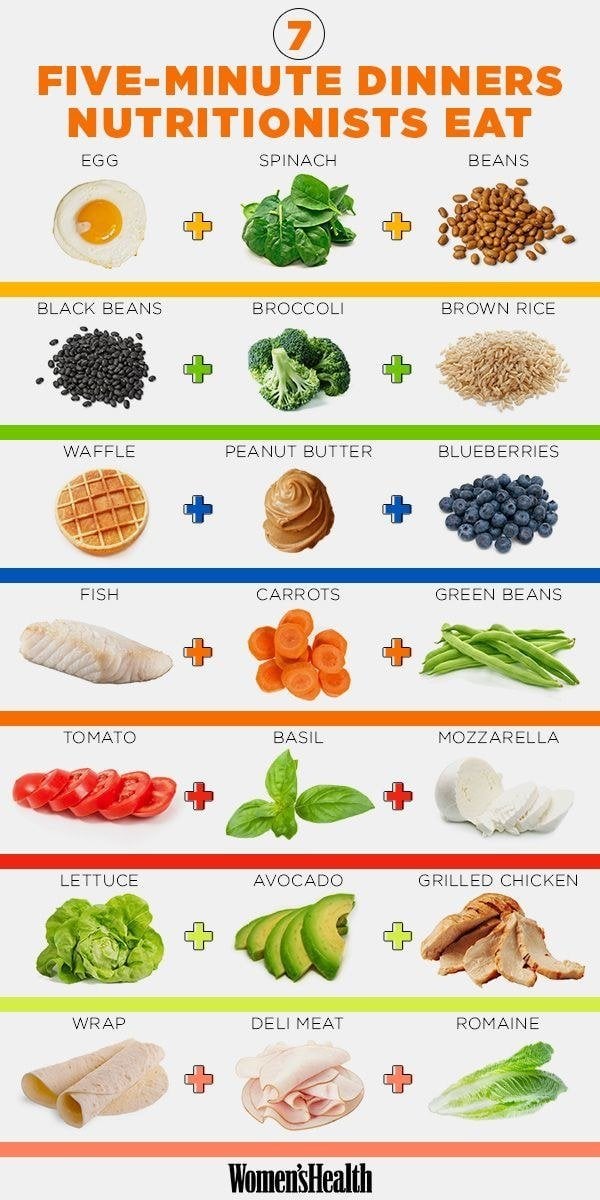
Image courtesy of www.lifehack.org via Google Images
Gym Plan
Developing a gym plan that aligns with your fitness goals is essential for success. Set clear goals for your gym workouts, whether it’s building strength, improving endurance, or toning muscles. Creating a schedule for your gym sessions ensures you prioritize your workouts and stay consistent. Choose the right equipment and exercises that target your specific goals. Track your progress and adjust your plan as needed to continue seeing results.
How to Stay Consistent
Consistency is key when it comes to achieving your fitness goals. Overcoming challenges and staying motivated can be difficult, but implementing strategies like setting goals, creating a routine, and rewarding yourself can help you stay on track. Incorporating fitness into your daily routine and taking small steps towards your goals can lead to long-lasting results.
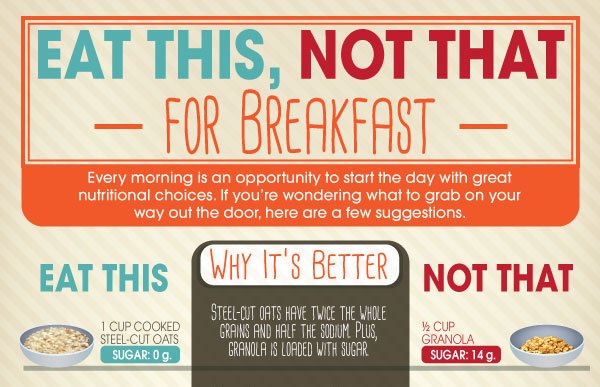
Image courtesy of www.lifehack.org via Google Images
Mindset and Mental Health
Your mental health plays a significant role in maintaining a healthy lifestyle. Practices like meditation, mindfulness, and stress reduction can help you stay focused and positive. Take care of your mental well-being by prioritizing self-care, setting boundaries, and seeking support when needed. Remember that progress takes time, and it’s essential to be patient and kind to yourself throughout your fitness journey.
Progress Tracking
Tracking your progress is essential for staying motivated and adjusting your fitness plan as needed. Different methods like measurements, photos, and performance metrics can help you see how far you’ve come. Utilize apps and tools to monitor your workouts, nutrition, and overall health. Celebrate your milestones and use them as motivation to keep pushing towards your goals.

Image courtesy of www.reddit.com via Google Images
Seeking Support and Accountability
Finding support and accountability can be a game-changer in achieving your fitness goals. Joining a fitness community, finding a workout buddy, or working with a professional like a personal trainer or nutritionist can provide guidance and motivation. Use social media as a tool for inspiration and accountability by sharing your journey and connecting with others who are on a similar path.
Conclusion
In conclusion, achieving your fitness goals requires dedication, consistency, and a holistic approach to health. By implementing the tips and strategies outlined in this guide, you can create a solid foundation for a healthier lifestyle. Remember to be patient with yourself, celebrate your progress, and seek support when needed. With the right mindset and determination, you can reach your fitness goals and become the best version of yourself.



